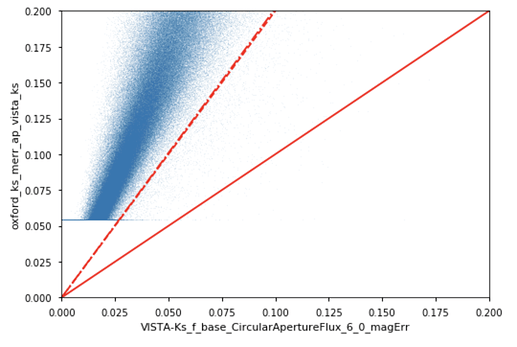In a previous comment I have talked about the necessity of using the same pixel space in every band. This is of particular interest to us because we are combining imaging from HSC and VISTA where the latter has a native pixel scale around twice as large. In a typical use of SWARP and SExtractor I am told that the subsequent under estimation of errors due to correlated pixels is accounted for by adjusting errors by the factor of the ratio of background pixel RMS in the original exposures compared to the warped exposures on the new pixel scale.
My question therefore is do I have access to the RMS of the background pixels in calibrated exposures, warped exposures and coadds using the Butler returned objects? Alternatively, do I need to take the positions of the ‘sky objects’, get the pixels and measure the RMS of the pixels?
This shows the LSST Sciene Pipeline measured errors against our SExtractor comparison catalogue equivalent. The SExtractor errors are limited to above 0.055. The red lines are 1:1 and 2:1.
I realise that the LSST Science Pipelines are not specifically targeted to multi-camera/pixel scale use but I wonder if many others will try to do this with various instruments.
Many thanks,
Raphael.
